AUGMENTED REALITY VS VIRTUAL REALITY: ARE THEY SAME?
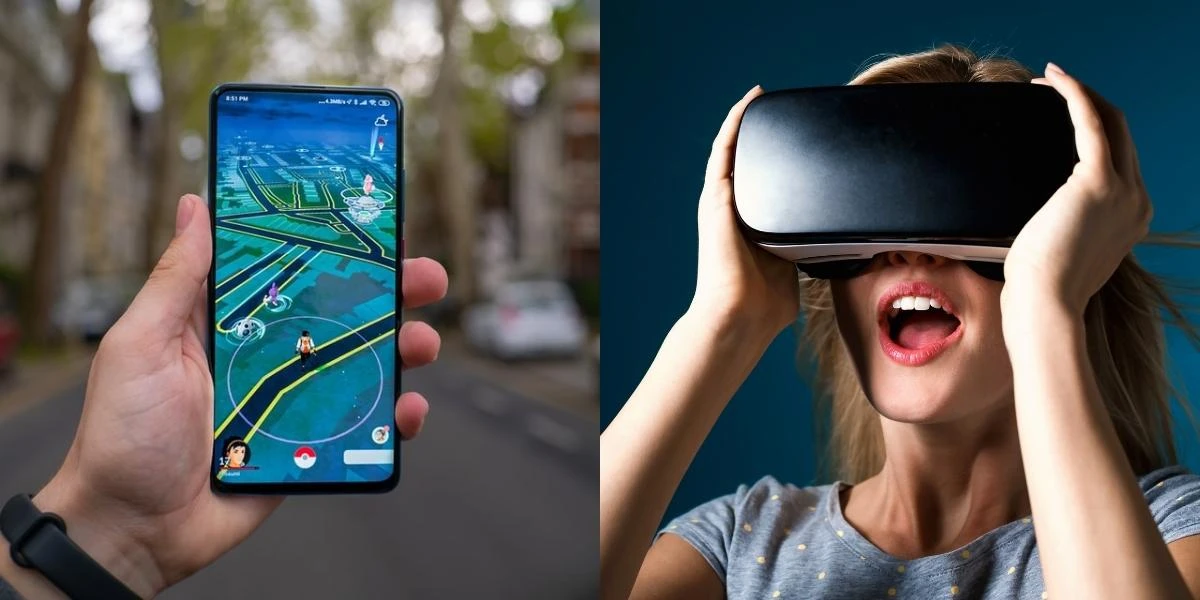
Image Credits: Canva
Have you wondered how your video games, animated movies, or soccer match 3D scoreboard look so real on your TV or computer? Technology is the ultimate reason behind this experience. The fine line between the virtual and real-world has always caught sci-fi fiction writers’ attention. Augmented and virtual reality have successfully minimized this difference over the years. In this article, you will completely get all the applications, differences & similarities of augmented reality vs virtual reality.
Augmented reality(AR) and virtual reality(VR) are two confusing terminologies that can be similar and different in many ways. Some examples of AR and VR technologies are video games, movies, and other 3D content you often play on your smartphones.
Difference & Similarities: Augmented Reality & Virtual Reality
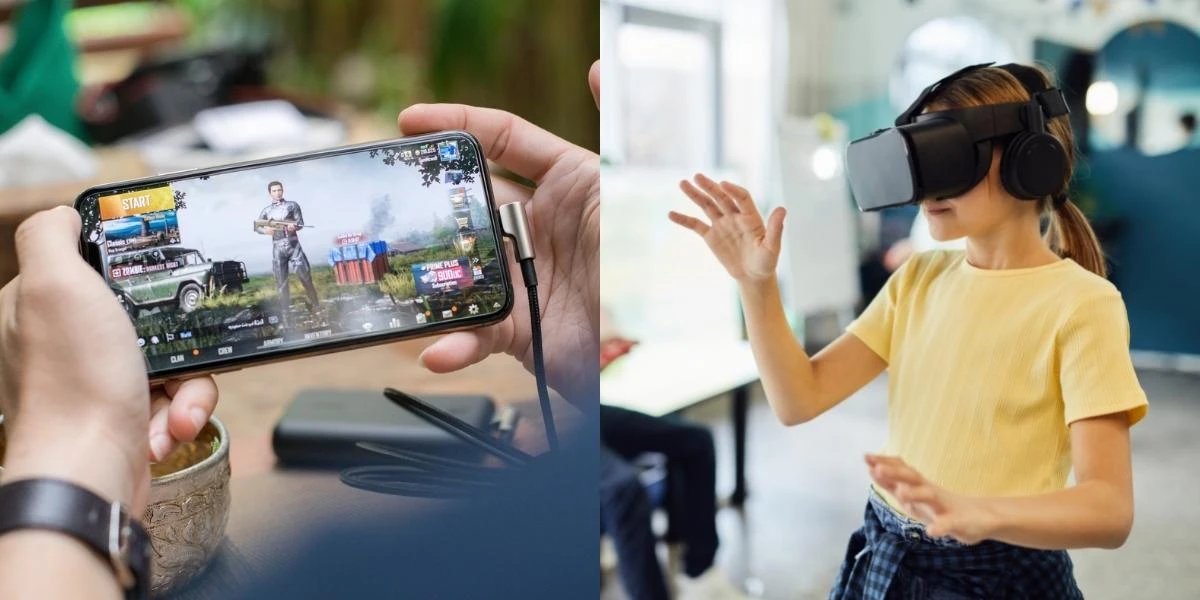
Image Credits: Canva
| Augmented Reality | Virtual Reality |
| The system augments the real-world scene. | A fully immersive virtual environment |
| The viewer always feels present in the real world. | The system controls the user’s visual senses |
| 25% virtual and 75% real | 75% virtual and 25% real |
| Partially immerses the user into the action | Fully immerses the user into the action |
| Requires 100 Mbps bandwidth and upwards | Requires minimum 50 Mbps connection |
| AR headset is not needed | VR headset device is required |
| Users are connected to the real world while interacting with virtual objects nearer to them. | The user is isolated from the real world and immersed in a fictional world. |
| AR is used to enhance both real and virtual worlds. | VR is used to enhance fictional reality for the gaming world. |
Augmented Reality (AR)
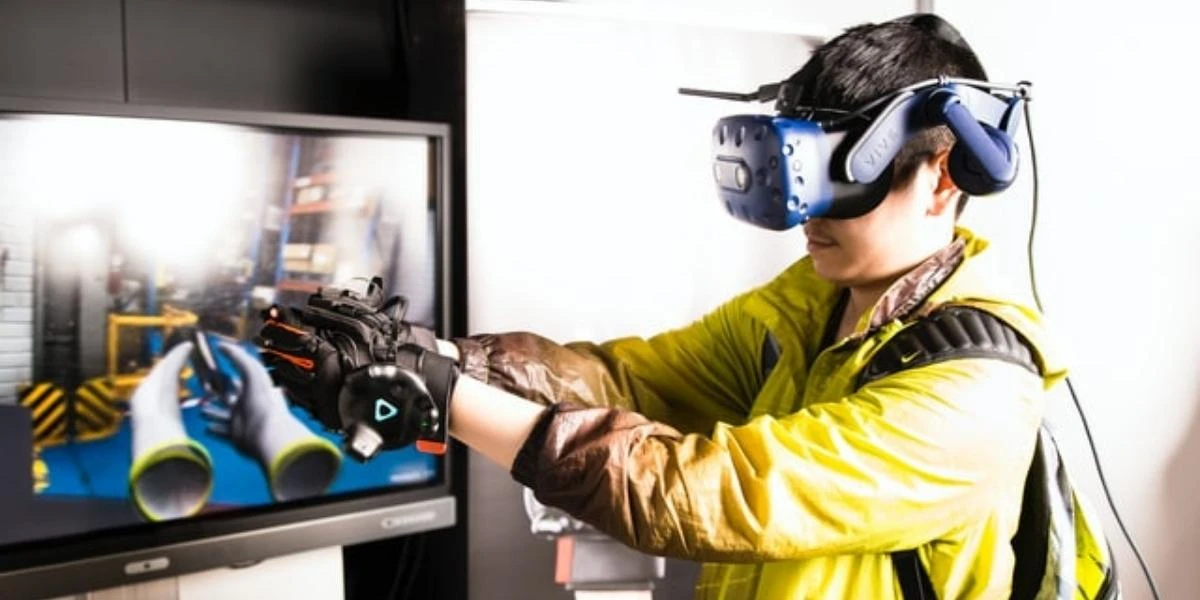
Image Credits: unsplash
Augmented Reality (AR) is a complete blend of digital and physical elements of the world, creating an artificial environment. AR technology develops apps for smartphones, tablets, or computers that combine digital components with the real world.
For example, AR technology allows you to display score formats on telecast sports games and 3D photos, text messages, and emails.
Virtual Reality (VR)
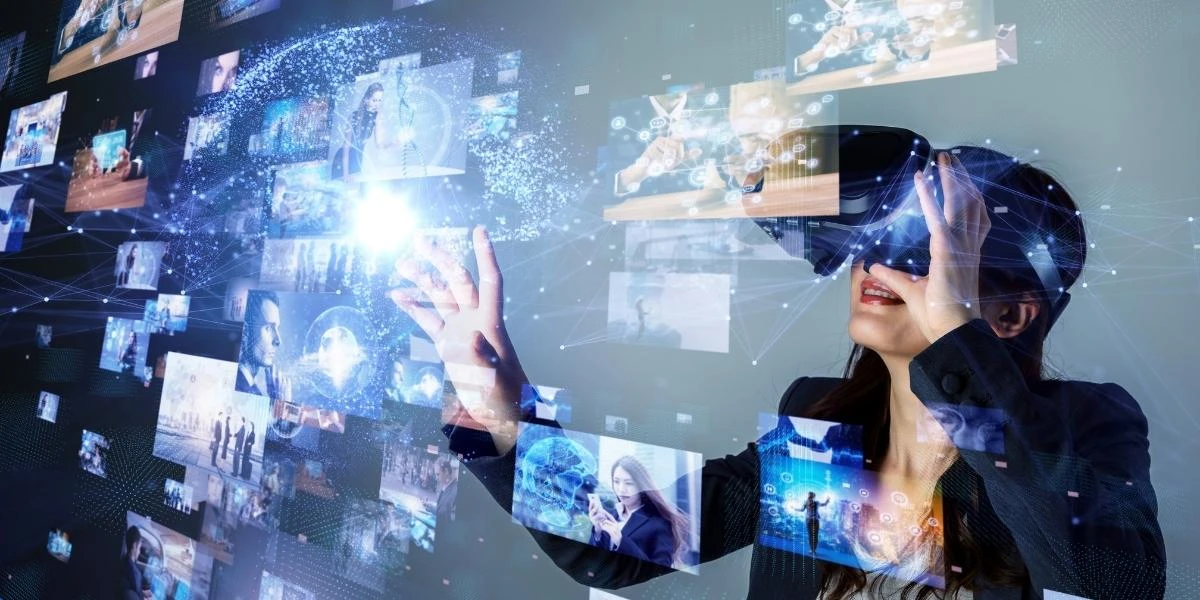
Image Credits : unsplash
Virtual Reality (VR) is a computer-generated duplicate of an alternate or real world. VR Headsets or other devices helps to duplicate images of the real world and engage the viewer in it via sensory devices like headsets and gloves.
VR technology is used in 3D movies, video games, entertainment, training, education, and science studies.
History of AR and VR technologies
In the 1930s, science fiction writers and tech lovers would sketch an environment to display something far from reality using machines and arts. See-through toys and enclosed flight simulators became popular in the 1950s and 60s. Today technology has made this fictitious world of the yesteryears so lively that market researchers predict rapid growth for the AR and VR industry.
Companies and developers are adopting AR or VR technologies in diverse fields like marketing, education, virtual training, remote assistance, exercising, medical diagnosis of patients, gaming, entertainment, etc. However, it is difficult to compare the usability of AR and VR technologies as both have a unique significance in the digital world. This article compares the two to help you choose the one suitable for your project work.
How does augmented reality(AR) work?

Image Credits: unsplash
AR uses computer vision, mapping, and depth tracking to show appropriate content
to the users. This system allows cameras to collect, send, and process data to
offer digital content suitable for its viewers.
In simple words, AR enhances
the user’s physical environment with its related digital output in real-time.
You can (AR) augmented reality with a smartphone or special hardware.
1. AR Smart Glasses like Google Glass Enterprise Edition 2, Microsoft HoloLens 2, Oculus Quest 2, Raptor AR Headset, and Magic Leap One
2. AR is used in the medical sector to diagnose complex medical situations. AR applications determine the end-to-end structure, margins, or shapes of the disease, like tumor or cancer. They provide relevant insights in an interactive three-dimensional augmented format by examining the bodies of medical patients.
3. Many Smartphone apps also use AR.
4. The entertainment industry uses AR to develop popular characters and apps like Snapchat, google lens, augment, etc.
5. Most travel apps use AR technology to locate transportation, gas stations, ATMs, temples, and tourist spots.
6. Educational institutions use AR in applications like Google Earth etc., to ease training children on various subjects, enhancing their view on the subject.
7. AR-based applications like Silent Partner safely capture photos or videos of unusual events like disasters from your smartphones.
How does Virtual Reality(VR) work?
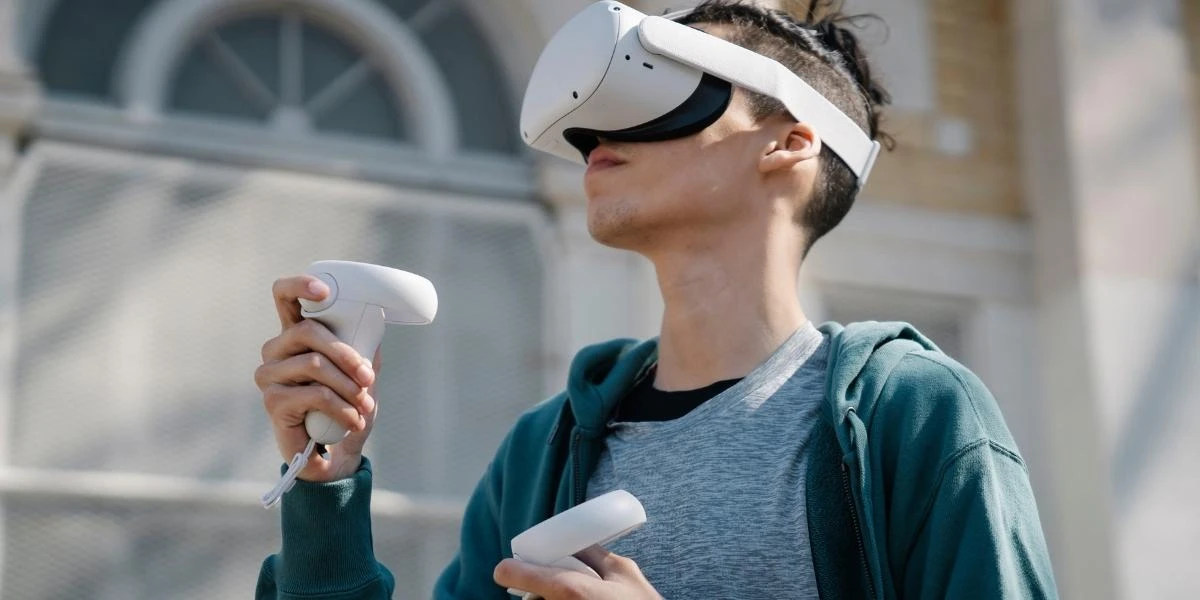
Image Credits: Canva
Virtual reality focuses on simulating the vision. The viewer puts a VR headset screen over his eyes, eliminating any interaction with the real world. Instead, the screen fills your entire peripheral vision giving you a feeling of being in the scene and interacting with it. You can see the visuals on the PC or mobile phone screen via a connected HDMI cable. VR uses goggles, speakers, and sometimes handheld gadgets to simulate a real-world experience. You can also employ visual, auditory, and tactile stimulation to immerse yourself in the constructed reality.
Examples of Virtual Reality Technology1. VR facilitates training in the healthcare sector in real-world situations without being in the midst of an emergency.
2. VR was first used and continues to be used today in the entertainment industry like cinemas and theme parks to simulate movie-like adventures.
3. VR helps car manufacturers analyze road scenarios and the behavior of cars while developing car models.
4. VR is part of educational games, field trips, and experiencing the world.
5. VR enables space and military trainees to prepare with minimal risks and helps soldiers overcome battlefield trauma.
6. Architects can use VR to envision building outlines and understand the work to deliver customer satisfaction.
7. There are a variety of applications of VR in digital marketing.
Benefits of Augmented Reality(AR) & Virtual reality(VR)
| Augmented Reality | Virtual Reality |
| Offers individualized learning | Immersive learning |
| Fostering the learning process | Creates an interactive environment |
| Wide variety of fields | Increase work capabilities |
| Offers innovation and continuous improvement | Offers convenience |
| Increases accuracy | It helps you to create and explore a realistic world. |
| It is used to increase user knowledge and information. | It makes education more accessible and comfortable. |
| People can share experiences over long distances. | Users can experiment in an artificial environment. |
| It helps developers build games that offer the user a “real” experience. |
Drawbacks of AR & VR
| Augmented Reality | Virtual Reality |
| Implementation, development, and maintenance of AR technology-based projects are expensive. | Though it is popular, programmers cannot interact with virtual environments. |
| Lack of privacy | Escapism is commonplace for VR users |
| Low-performance levels of AR devices can arise during the testing phase | VR environment training is less effective than training and working in the real world. |
| Can cause mental health issues. | People like to live in the virtual world instead of dealing with real-world problems. |
| A security breach may affect the overall augmented reality viewing principle. | |
| Prolonged exposure to AR technology can lead to significant healthcare issues such as eye problems, obesity, etc. |
Applications of Augmented Reality (AR)
Applications of Virtual Reality (VR)
How do AR and VR work together?
Augmented Reality and Virtual Reality work individually and together for different applications. They mostly blend themselves to generate an improved and engaging experience. Both the technologies merge to take the user to the fictitious world by giving a new dimension to the interaction between the real and virtual world.
FAQs:
To Summarize
In this guide you must have understood the difference and similarities of augmented reality vs virtual reality. Virtual Reality (VR) and Augmented reality(AR) are the future of Artificial Intelligence (AI) technology. They have developed themselves to generate realistic images, sounds, and other sensations that let you experience a spectacular imaginary world. Augmented Reality (AR), which adds virtual stuff to your real-world environment, contributes to the buzz, and both technologies have a great scope of development in the near future. Therefore, check your gadgets and applications for their AR and VR technologies before using them for specific purposes. The above mentioned points will guide you about these tech applications if you plan to work on technological projects.
